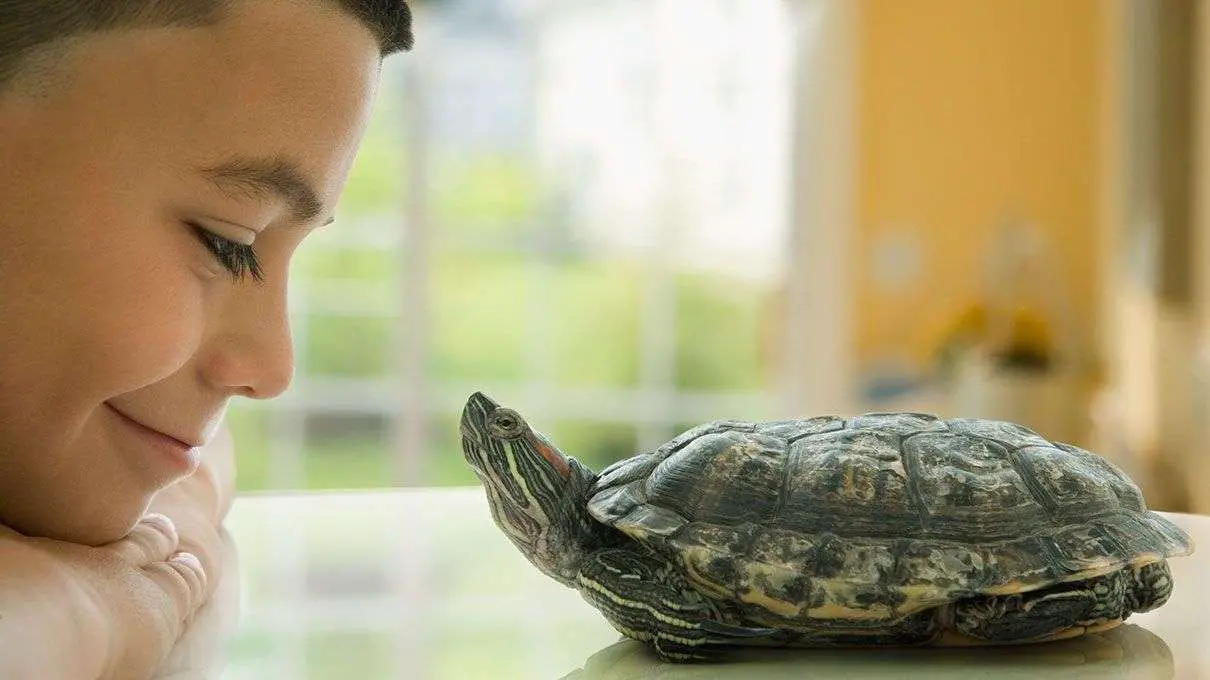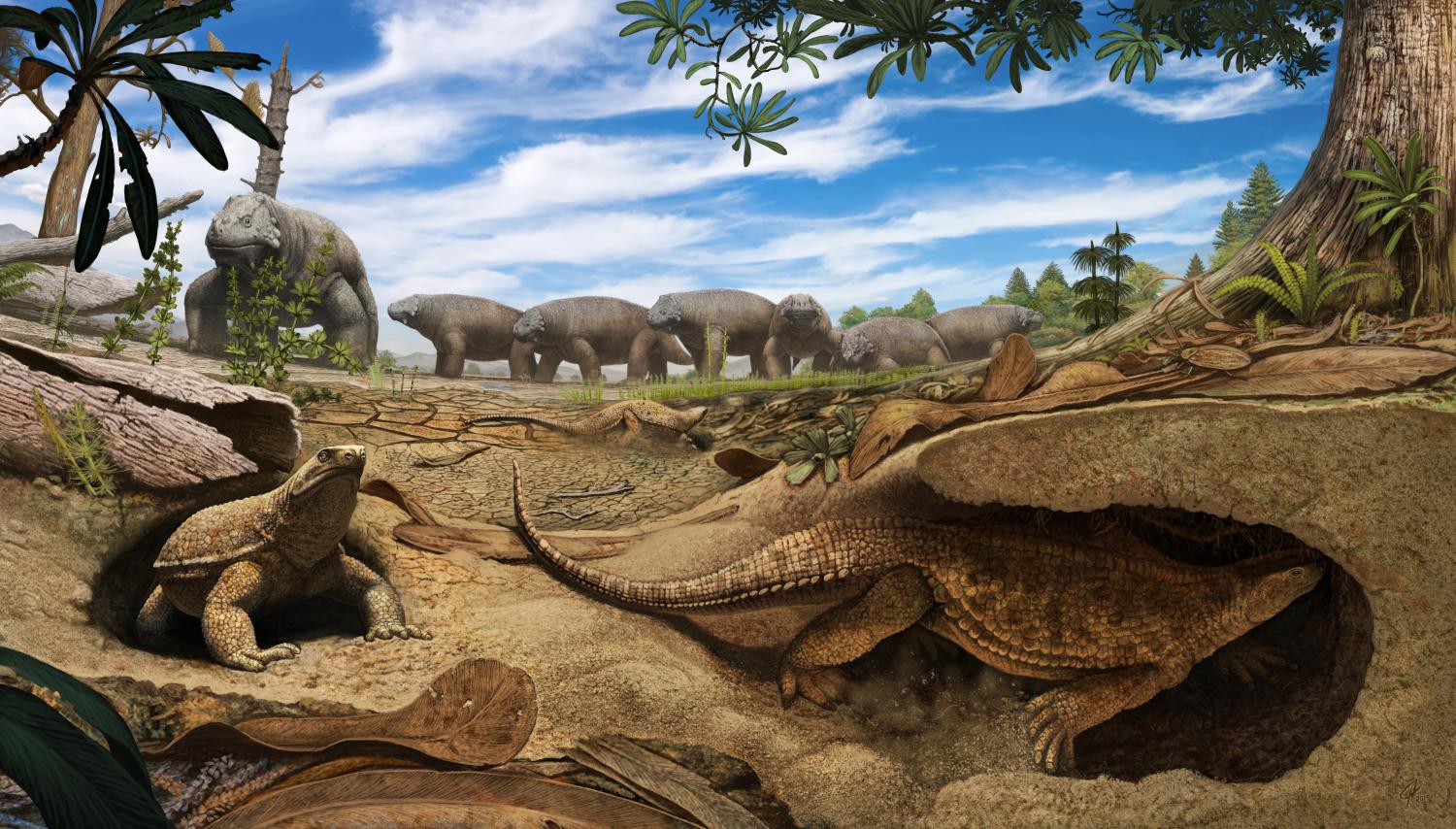Why Do Turtles Have Shells

Turtles have shells for a variety of reasons. The shell provides protection from predators and the environment. It also helps to keep the turtle’s body temperature regulated.
The shell is made up of two parts: the carapace (top half) and plastron (bottom half). These are connected by the turtles’ ribs and spine. The shell is covered in a layer of tough, scaly skin.
Turtles are unique creatures that have been around for millions of years. One of the most distinctive features of turtles is their shells. But why do they have shells?
There are a few reasons why turtles have shells. First, the shell provides protection from predators. The hard shell makes it difficult for predators to bite or claw the turtle, and can even deter some predators altogether.
Second, the shell helps the turtle to stay hydrated. Turtles can absorb water through their skin, and having a shell helps to keep this moisture in. This is especially important in hot, dry climates where water is scarce.
Lastly, the shell provides buoyancy which helps the turtle to float and swim. This is an advantage when crossing rivers or ponds, as well as during mating season when males need to be able to travel long distances to find females.So there you have it!
Three reasons why turtles have shells. Next time you see a turtle, take a moment to appreciate this amazing creature and all that its shell does for it!
Interesting Facts About Turtles – Why Do Turtles Have A Shell- Ninja Turtles
Why Do Turtles Hide in Their Shells
When a turtle feels threatened, it will instinctively retreat into its shell for protection. The shell acts as a barrier between the turtle and potential predators, providing a measure of safety. Additionally, the shell provides some degree of camouflage, helping the turtle to blend in with its surroundings and avoid detection.
While the shell offers turtles a certain level of protection, it is not impenetrable. Sharp claws or teeth can puncture the shell, leaving the turtle vulnerable to attack. As such, turtles must be careful when retreating into their shells – if they are not well-hidden, they may simply be making themselves an easy target for predators.
Why Do Turtles Have Shells Myth
A turtle’s shell is not just there for protection. It is also part of the turtle’s skeleton. The top part of the shell is called the carapace, and the bottom part is called the plastron.
The carapace and plastron are connected by ribs and muscles.The shell provides a large surface area for muscle attachment, which helps the turtle move on land. The shell also protects the turtle’s internal organs from predators and other dangers.
There are many myths about why turtles have shells. One myth says that a god cursed a disobedient turtle by giving it a hard shell. Another myth says that turtles were once soft-bodied creatures that lived in trees.
A great flood swept them down to the ground, where they hardened into their current form.Whatever the reason for their shells, turtles have been around for a long time – over 200 million years! They are one of nature’s most successful survivors.
Why Do Turtles Have Webbed Feet
Turtles are reptiles of the order Testudines. The feet of most turtles and tortoises are webbed to varying degrees, with some species having fully webbed feet while others have only partial webbing. Webbing between the toes helps these animals swim more efficiently in water and also aids in walking on soft substrates such as mud.
Some turtles that spend most of their time on land may have only lightly webbed or even unwebbed feet, while those that live exclusively in water usually have strongly webbed feet. The amount of webbing can also vary depending on the season, with some turtles shedding their toe webs during the winter months.So why do turtles have webbed feet?
This adaptive trait helps them move more easily through their aquatic habitats and provides better traction on slippery surfaces. Whether you’re admiring a turtle basking in the sun or watching one glide gracefully through the water, their unique foot structure is just another example of how these amazing creatures have adapted to survive in a wide range of environments.
How Do Turtles Get Their Shells
Turtles are one of the most popular reptiles in the world. Many people find them to be very cute and interesting animals. One of the things that make turtles so unique is their shell.
Turtles have a hard, protective shell that covers their entire body. This shell is made up of two parts, the carapace and the plastron. The carapace is the upper part of the shell and the plastron is the lower part.
The turtle’s shell is made up of about 60 different bones that are all connected together. The inside of the shell is covered with a thin layer of skin. This skin has many tiny blood vessels in it that help keep the turtle warm.
The outside of the turtle’s shell is covered with a tough, plate-like material called keratin. Keratin helps to protect the turtle from predators and other dangers.Turtles can withdraw into their shells for protection when they feel threatened.
When a turtle retracts its head and limbs into itsShell,the hard plates come together and form a barrier around them .A Turtle’s Shell grows along withthe Turtle ,as it gets older ,so that it can provide adequate protection .

Credit: phys.org
Can a Turtle Live Without a Shell?
No, a turtle cannot live without its shell. The shell is made up of bone and keratin, and it protects the turtle’s vital organs from predators and the elements. Without its shell, a turtle would be highly vulnerable to attack and would not be able to survive for long.
How Does a Turtle Make a Shell?
A turtle’s shell is made up of 60 different bones that are connected together by ligaments and muscles. The top part of the shell is called the carapace, while the bottom portion is called the plastron. The carapace and plastron are connected together on either side by the bridge.
The shell is covered in a layer of keratin, which is the same substance that makes up human fingernails and hair. This tough outer layer protects the turtle from predators and other dangers. Underneath the keratin layer, the shell is made up of two layers of plates.
The bottom layer consists of large, flat plates that provide support for the turtle’s body. The top layer consists of smaller, interlocking plates that give the shell its shape.The turtle’sshell grows with it as it matures.
When a turtle gets too big for its shell, it will shed its old one and grow a new one.
Do Turtles Feel When You Touch Their Shell?
Do turtles feel when you touch their shell?Yes, turtles can feel when you touch their shell. They have nerve endings in their shell that allow them to sense touch, pressure, and temperature.
However, they do not have the same type of nerves that we do, so they probably don’t feel pain in the same way that we do.
Why Can Turtles Live Without Their Shell?
A turtle’s shell is made up of around 60 different bones that are all connected together. The top part of the shell is called the carapace, and the bottom part is called the plastron. The carapace and plastron are connected together at the turtle’s sides with a bridge.
The shell provides turtles with protection from predators and other dangers. It also helps to keep them warm and dry. Turtles can live without their shell, but they would be much more vulnerable to predators and other threats.
Conclusion
Turtles are reptiles of the order Testudines. They are characterized by a special bony or cartilaginous shell developed from their ribs that protects them from predators. The turtle shell has a top (carapace) and a bottom (plastron).